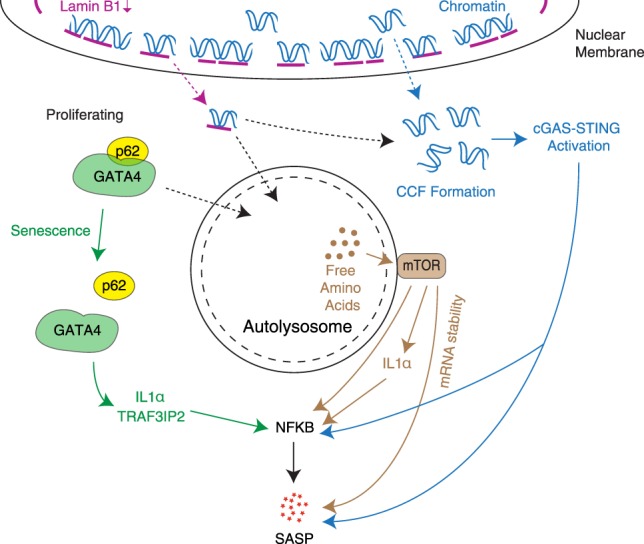Figure 3.

Multiple nonunidirectional levels through which autophagy-related processes in senescence affect regulation of SASP genes, often via NFkB activation. Activation of macroautophagy as an effector of senescence and spatial coupling of mTOR with autolysosomes lead to mTOR activation, which has been proposed to modulate SASP expression through multiple mechanisms. Autophagy-mediated degradation of Lamin B1 also promotes CCF formation, which up-regulates SASP genes through the cGAS–STING pathway. This has been suggested to occur by both nuclear membrane blebbing, which shuttles LADs to the cytoplasm, and loss of nuclear envelope integrity, which allows the escape of chromatin fragments. However, the activation of general autophagy during senescence is accompanied by an inhibition of p62-mediated selective autophagy, allowing stabilization of the GATA4 transcription factor, which regulates SASP genes via NFkB.
